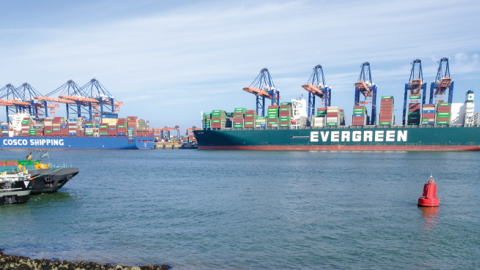Taiwan is in the process of being reclaimed from Western influence that began in 1582 when the passengers and crew of a deep-draft Portuguese ship run aground in the constantly shifting shallows and sandbars of the island’s western coast became the first Europeans to land on the shore of what they called “Ilha Formosa,” the beautiful island.
Taiwan has long been a fulcrum of great power competition, center stage for historical actors who have sought to dominate the coastal trade between mainland Chinese ports, the regional trade between China, Japan, and the Dutch East Indies, and the oceanic trade with Australia and India. During the late Ming period, Taiwan became a destination for Chinese from the barren Fujian Province who turned to trade and the sea to make a living. Taiwan thrived after 1867, when the Ming court allowed foreign trade, but maintained a ban on Chinese trade with Japan: the island was the ideal location for Chinese merchants to trade with the Japanese, exchanging Chinese silks and porcelain for Japanese silver, safely beyond Ming jurisdiction.
The common theme in these historical examples is the desire of interlopers to persuade the Chinese government to open China’s domestic markets to trade with foreigners, a trend that culminated in the mid-nineteenth century with the imposition of treaty ports by the Western European seaborne empires, as well as the United States, where their merchants lived under their own laws and conducted business mostly on terms favorable to the international trading and shipping companies based in the West.
The Chinese induced the Dutch East India Company (Vereenigde Oost-Indische Compagnie, or VOC) to set up a major trading and naval base on the island, in 1624, which the Dutch located under the watch of Casteel Zeelandia, the fortress they built for the purpose. This reduced Dutch designs on mainland Chinese ports. It also brought the VOC into contract with Zheng Zhilong, patriarch of a Chinese maritime family that eventually became powerful enough in maritime commercial and military means and expertise to force the Dutch out of Taiwan, with support from the mainland imperial government.
This context illustrates the long history of commercial maritime capability and strategic calculation in China. In large measure, the security policy establishment in the West has underestimated or overlooked China’s formidable commercial maritime heritage and the central role of Taiwan in China’s competition with other powers for influence in trade and political matters. A policy consensus that views China through the tidy late-twentieth century lens of China as a “continental” power presents China’s current maritime power as the development of new capabilities to challenge Western powers assumed to be maritime nations. I believe China is a continental power—but the continent China sees is Eurasia itself, and the present tensions in the Pacific maritime domains reflect modern Beijing’s campaign to reduce the influence that the belligerent nations of Eurasia’s western peninsula have in Pacific affairs in the way the Zheng family turned out the VOC.
This context also demonstrates that historically, Chinese leadership has maintained focus on what the policy establishment now calls the “dual use” nature of maritime commercial capabilities. China’s leadership recognizes that the civil and military purposes of maritime assets are inherently inseparable. Ships, ports and shore installations, and hinterland trade and financial networks confer not just opportunities for profit but also the chance to build political power, as the Zheng’s did on Taiwan, adopting imperial ranks and titles to institutionalize the operation of an organization that sometimes served as an outsourced maritime security force for the imperial court focused on cavalry threats from the North. Just a few years ago, China adopted laws requiring commercial vessels be built to suit military needs, and their operators to make those vessels available to the Chinese military upon request. In the U.S. and the West, the line between civil and military uses of maritime assets is more distinct. Talk of the “maritime industrial base” typically focuses on commercial shipyards only to the extent of preserving the minimum capability needed to build vessels for the latest naval fleet plan, rather than ensuring that the American economy includes a robust sector for building, operating, and maintaining world-class oceangoing commercial vessels, and training the engineers, skilled workers, and mariners to operate such a fleet.
Ongoing rearmament in Australia, Japan, and South Korea might best be understood as the latest chapter in the working out of political and economic order in Southeast East and East Asia—by the countries that lie within the region—under the influence of China, now operating with greatly increased wealth and military strength, and motivated by having closed the door on the Western colonial era by re-taking Hong Kong. The Western rearmament effort, while ostensibly geared to the particular needs of each of those countries, seems to be primarily aimed at deploying carefully-selected assets through U.S.-allied militaries functioning as units of an American-controlled unified force. For example, the U.S. apparently declined to respond to Taiwan’s request to buy sophisticated anti-submarine helicopters, suggesting that “Ilha Formosa” instead buy the types of U.S. weapons that the Ukrainian army are using effectively against invading Russian troops.
The weapons menu being suggested to Taiwan reflects a recent paper in a U.S. military journal that called for Taiwan to adopt a scorched earth strategy, threatening to destroy its semiconductor industry if China invades, while buying weapons that would make it costlier for China’s forces to occupy the island. In a subsequent article in The Taiwan News defending the idea against sharp criticism from some quarters, the authors of the paper note that they conceived the strategy as a “new approach to deterring a Chinese invasion—one that does not rely on a threat of war that might be losing its potency.”
That’s a roundabout way of saying the traditional method of deterrence has failed in the case of Taiwan. The authors say their idea gives Taiwan an “independent means” of deterrence at time when some U.S. security analysts question the credibility of U.S. commitment to defending Taiwan. But is Taiwan likely to show its independence by destroying its prized semiconductor industry?
So far, President Xi Jinping has shown a tendency to build or to buy control of industrial or infrastructure assets that can increase China’s economic leverage and political influence, rather than to risk their destruction through military action. China’s commercial sea power might provide a way for China to take effective control of Taiwan without military action.
Taiwan is home to Evergreen Line—a family-owned shipping company famous for its vessel the Ever Given getting stuck in the Suez Canal. Barely noticed is that Evergreen is part of the Ocean Alliance, one of the three global shipping alliances that manage the capacity of the world’s container fleet. The Ocean Alliance is dominated by China’s state-owned entity COSCO Shipping: COSCO also owns Ocean Alliance member Orient Overseas Container Line, which was founded by the Tung family—C.H. Tung served as the first Chief Executive of Hong Kong after the turnover in 1997, with the support of the Chinese Communist Party. History suggests Beijing might find a way to use its maritime strength and economic clout to absorb Taiwan, again. If Xi can do so through a negotiated concession that preserves Taiwan’s economic value, rather than a military strike, the West will need to devise methods of deterrence to confront an adversary that can achieve strategic goals by wielding carrots instead of sticks.
Deterrence of China in the Pacific hinges on projecting military strength that is literally built on a demonstrable foundation of maritime industrial capacity. The U.S. lacks such a foundation. No shipyard in the U.S. builds large containerships; not only was the Ever Given repaired in a Chinese shipyard, Chinese shipyards build the latest LNG-powered containerships for members of the Ocean Alliance, such as CMA CGM, right alongside Chinese aircraft carriers. Western analysts scour satellite images of the aircraft carrier, yet remain oblivious to the containership being built right alongside, a ship that will increase the range and influence of the Ocean Alliance, the organization that enables China’s state-owned shipping and logistics companies to project China’s industrial power into the heart of the developed western economies that have granted the Chinese decades-long concessions to run their ports. Port control gives China influence over critical economic sites of Western countries that tempers the credibility of maritime deterrence threats.
The scorched earth strategy, or a Western counterattack on China’s invasion force, would both require the U.S. and its allies to sustain a supply line across a Pacific Ocean patrolled by China’s growing submarine fleet. The U.S. sealift capability is thin, and a 2019 exercise showed that only about 40% of the fleet was fully ready for deployment. Efforts are underway to rebuild the fleet, but the project will take years to complete—and sustaining a Taiwanese insurgency against a Chinese invasion would require resources in addition to the sealift force designed to provide logistical support to U.S. naval missions. Despite bellicose calls from elected representatives and former national security officials that the American public must prepare for war in the Western Pacific, such maritime deterrence is likely to fail and fail quickly. What’s more likely in store is not a long-running insurgency from Taiwan’s mountains, but a maritime 9/11, a modern American version of the Spanish Armada’s ill-fated encounter with the English navy.
Although Spain maintained a worldwide colonial empire until the U.S. took it over by force in 1898, the defeat of the Armada prevented Spain from restoring the unitary power and influence of the Habsburg Empire over Europe, and opened the way for Dutch and English fleets to supplant Spanish and Portuguese maritime power, in both commercial and naval terms, and to establish what we now call the liberal world order. The U.S. stands as the steward of that order. But just as Spain lacked commercial maritime logistical capabilities to repair damaged vessels, the U.S.—and its Western allies in the Anglophone Five Eyes intelligence-sharing alliance—lack commercial oceanic logistics capabilities on par with what China has built over the past several decades. Sea power consists of naval and commercial capabilities, and global hegemons have historically attained—and jealously guarded—superiority in both categories. The U.S. is betting against history that it can remain global hegemon without holding command of the commercial oceanic domain. A conflict in the waters off Taiwan might well determine whether the wager pays off.
Read in Hoover

















